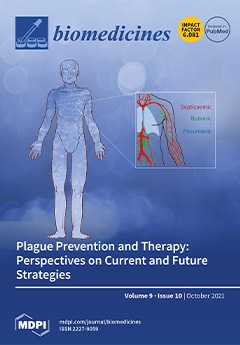Background: Antibiotic-resistant type III/ST-17
Streptococcus agalactiae (group B
Streptococcus, GBS) strain is predominant in neonatal invasive GBS diseases. We aimed to investigate the antibiotic resistance profiles and genetic characteristics of type III/ST-17 GBS strains.
Methods: A total of 681 non-duplicate GBS isolates
[...] Read more.
Background: Antibiotic-resistant type III/ST-17
Streptococcus agalactiae (group B
Streptococcus, GBS) strain is predominant in neonatal invasive GBS diseases. We aimed to investigate the antibiotic resistance profiles and genetic characteristics of type III/ST-17 GBS strains.
Methods: A total of 681 non-duplicate GBS isolates were typed (MLST, capsular types) and their antibiotic resistances were performed. Several molecular methods (WGS, PCR, sequencing and sequence analysis) were used to determine the genetic context of antibiotic resistant genes and pili genes.
Results: The antibiotic resistant rates were significantly higher in type Ib (90.1%) and type III (71.1%) GBS isolates. WGS revealed that the loss of PI-1 genes and absence of ISSag5 was found in antibiotic-resistant III/ST-17 GBS isolates, which is replaced by a ~75-kb integrative and conjugative element, ICE
Sag37, comprising multiple antibiotic resistance and virulence genes. Among 190 serotype III GBS isolates, the most common pilus island was PI-2b (58.4%) alone, which was found in 81.3% of the III/ST-17 GBS isolates. Loss of PI-1 and IS
Sag5 was significantly associated with antibiotic resistance (95.5% vs. 27.8%,
p < 0.001). The presence of ICE
Sag37 was found in 83.6% of all III/ST-17 GBS isolates and 99.1% (105/106) of the antibiotic-resistant III/ST-17 GBS isolates.
Conclusions: Loss of PI-1 and IS
Sag5, which is replaced by ICE
Sag37 carrying multiple antibiotic resistance genes, accounts for the high antibiotic resistance rate in III/ST-17 GBS isolates. The emerging clonal expansion of this hypervirulent strain with antibiotic resistance after acquisition of ICE
Sag37 highlights the urgent need for continuous surveillance of GBS infections.
Full article






